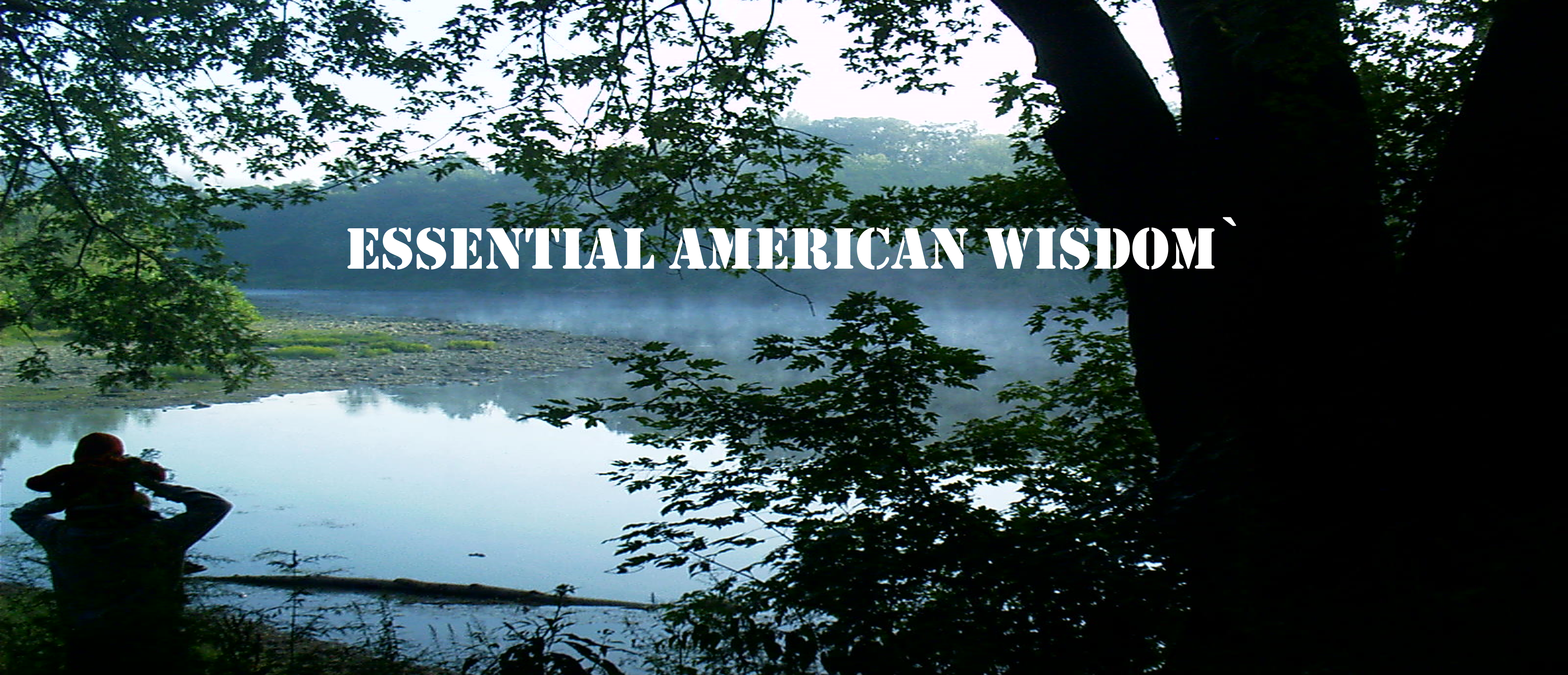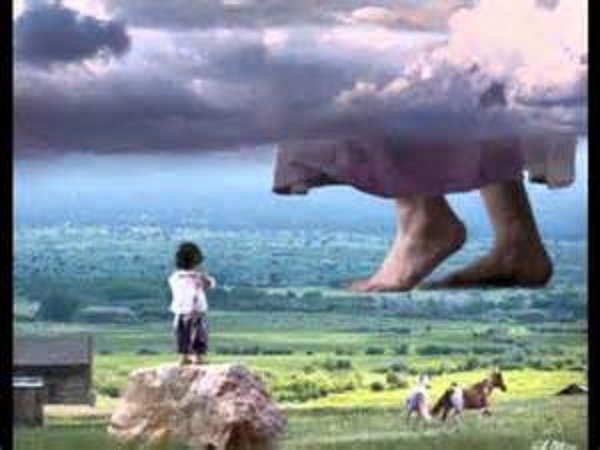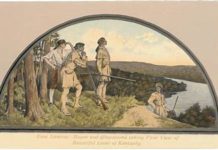Has anyone been able to explain “how” the ancient Egyptians built the Pyramids when most of the engineering skills they would have been required would not be discovered for millennia? Even the mathematics that would have supported their engineering technology was not supposedly developed until the 6th Century BC, in Greece, over 2000 years later. Or so they say. And what about the management organization skills that were required to carry out such monumental tasks? Gang labor, skilled labor, quarrying, logistics?”
Yes, there have been several theories. But none that include “outside help”, something the native population referred to as “gods”.
Or how about the building of Macchu Picchu, in the Andes of Peru, built by the Incas in the 1400s, almost 4000 years after the Egyptians…

….by a people who did not know the wheel?
No really? You didn’t know that part?
The Incans also built grand highways, paved in stone, and (from oral histories as they did not have a system of writing) these roads were only used to move fleet messengers from place to place.
To the practical mind this makes no sense.
The Old World, Egypt, Mesopotamia, the Mediterranean, and the New World, or Mesoamerica, are generally considered by the “history sciences”, (Archaeology, Anthropology) to be separated by 2000 or more years in their cultural development; writing, metallurgy, domestication of grains and animals, textiles. It was the Europeans who introduced the horse to the Americas, for instance, in the 1500s, which quickly transformed our native inhabitants here.
The general theory is that the Americas were so teeming with nature-provided food sources that they didn’t need to develop animal and grain domestication, or for that matter, writing or metallurgy. Or even the wheel.
There is a bias in this position, actually more than one. For one, the Americas drew no great interest from European dilettantes who found their nearby ancient sites more romantic and easier to visit. In short, the Americas had no greater impact on a Eurocentric view of the world than did China and its ancient roots, and the Indian subcontinent, both of which also may hold as many revelations to Man’s pre-history as the Mediterranean and Near East.
I’ll discuss other biases as we go along.
The Americas have always been considered the junior members of the League of Civilizations. But at least they achieved the status of “civilization”, which has been denied the world’s “pagan” cultures who built no great cities (or they haven’t been found yet). They are found everywhere, from tribal Europe, throughout sub-Saharan Africa, and much of central Asia, to the native American tribes of North and South America, still known to us just last week. Their histories, while also ancient, going back at least 1500 years, merit less scrutiny, because they are based on oral legends with very little physical evidence of ever having done anything other than sitting around a fire circle and telling stories about their forefathers “before the buffalo, before the white man’ and even (and here’s the kicker) before the Flood! No really, form the American east to the Midwest, early anthropologists collected these tales from the 19th Century.
But pagans did get the notice of the philosopher Thomas Carlyle in the mid-19th Century, when he did a series of lectures on “Heroes” as I mentioned in December about the Nordic god Odin. In the 20th Century JRR Tolkien also thought highly enough of the Norse legends to build his model of Middle Earth around their myths and world views. Both Carlyle and Tolkien (also a renowned Roman Catholic scholar) viewed this pagan culture in the context of the “good” found in its mythology and belief system.
With this essay I want to close that loop from December by nominating “the Good” found in ancient cultures as a type of tie-breaker in the contest between oral legends and modern scientific (History) judgments that are less than absolute. Both have built-in biases, mind you, but while one more often than not leans towards the survival of the culture, the other, in its attempt to avoid value judgments about morality in culture, has grown over time to appear exclusionary and vain, as the contest between Good and Evil has fallen into little more than a debate between rival opinions, and the scientific gets to be the final peer review.
You see, now that the modern world has been largely built, at least on half the globe, and a vision of the way forward for the post-modern world now is in the development stage, the people who largely built modern civilization, and even sired many of the planners and visionaries for this future next-world, there is a rising “philosophical” or perhaps more aptly “political” movement that the world modern man had built over the past 500 years was really rather shoddily constructed. From Marx, Nietztsche, Foucault and others, the social theory of Man’s existence has found Man lacking, and the need to redefine the very nature of his morality of Man in order to get those things done.
That battleground has long been fought over in philosophical and political circles, and now finds itself carving out large territories among Science, who has already established itself as a jury of experts about so much in our lives.
Science does not have to take the side of Evil in its eternal war with Good. All it has to do is say “we can find no evidence that Good is what it says it is” and then mock the (less-educated) people who say it.
This puts the study of Ancient Man in another light.
The study of how Man, from the earliest times of pre-History moved from stone tools to metal tools, to building pyramids and hanging gardens, and carving empires, then having it all buried and then starting to rebuild it all over again about a thousand years ago, and now attempting to embark on a new New World by erasing much of the history of how those events occurred, is very relevant to us if this purported “brave new world” that is now on the drawing board shall be “Good”.
Or will “Good” simply be redefined as seems to be the current trend in history.
I simply remind you that Nature has its own definition of Good, one that is immutable, and not subject to peer review. A thing is “good” if it is survival enhancing, is “bad” if it is survival endangering. Nature makes this value judgment all the time among all the species, including Man. I mentioned that a few years ago when I wrote that “Darwin Agrees With God About Man’s Thirst for Liberty”.
It’s embedded in nearly all our major religions, and is one of the elements by which we can think of them as transcendent, the ability to regenerate themselves. Or not. So, if you can find this element in pre-historic Man, or among the pagans Carlyle highlighted, you can get a sense of how they directed their myths toward “the Good”. (I highly recommend the book The Territorial Imperative, by Robert Ardrey, 1966, especially his chapters “The Noyau” and “The Nation” which provides some interesting links between Darwin’s animal world and Man’s moral universe modern Darwinists don’t like to discuss. A devout atheist, Ardrey was too philosophical, too ethical, and placed too much emphasis on the general culture to be favored by those who want to turn Science into Man’s select jury pool.
My inquiry here (and my follow-up piece) also tries to provide an outline for future study for inquiring amateurs, especially since amateurs drove, and continue to drive much of the real discovery in the natural world. There are fantastical things out there that can provide a lifetime of intellectual inquiry, fragments from ever part of the world, and every era, just aching to have a little common sense, and a better understanding of Nature’s “prime imperative” about Good.
x x x x x
So when Science says on the one hand it’s not certain how Machu Picchu was built, with multiple theories to inspect, then on the other mocks oral legends that allege “the gods showed us how”, on what “earned authority” does it give itself this greater authority?
I argue that the case for oral legends should have an equal place in the discussion, since philosophically and logically it can often come out as the tie breaker.
This is especially true in the development of human history from the Stone Age forward, where virtually everything Science also “knows” is just as speculative as myth.
Consider: Accepting that Mathematics represents 100% certainty, and that most physical/medical sciences are in the 90%-99% range, i.e., carbon dating and DNA evidence, but also Geology, Botany, and some areas of Archaeology, the accuracy of the “sciences” around human existence on earth; from language, writing, abstract thinking (intelligence), religions, still hover much lower, in the 75%-50% range. This is especially true in knowing the processes of moving from one state of advancement to the next, from textiles, to grain and animal sciences and their domestication, and mechanics.
And it gets really iffy in outlining the development of metallurgy, which is why they called them the Stone Age, Bronze Age and Iron Age instead of the Raw Meat Age, Corn on the Cob Age, and Grilled Steak Age.
For Man to have achieved any of these things, there are things that had to already be there. Conditions precedent. You can’t have textile clothing until you can have a reliable supply of yarn and a way to turn yarn into cloth. Flax or cotton has to precede that. Needles and thread also come to mind. It would be still longer time before Man would be able to do these things with machinery, although Man’s mind began thinking about it for a long time before he could actually invent it.
Still, can anyone actually tabulate with math how long it took for ancient Stone Age man to see a wild cotton plant, then wonder (imagine) if he could find enough to make a blanket, or a shirt, or skirt? Imagine each step of that process.
This is why the development of Bronze is so problematic if discovered by mere accident, as some suggest, from melted minerals in a fire ring.
Men had to be actively looking for such minerals, with a purpose, and with some notion of smelting, and hammering into a desired shape. Copper was abundant in the areas where bronze was developed, but not so Tin. The math of not one, but several accidental processes to combine the two, especially in the 88% copper-12% tin formula, trial and error, is almost astronomical.
Still, the oral legend that the process was “a gift of the gods”, which is not only plausible, but even probable, if the modern scientist can get over the notion that the “god” was a supernatural being or an alien in a space ship. That “god” could simply have been a visitor from a now vanished civilization. (More plausible than you know.)
Ancient legends, and this whole notion of “the gods gave us this knowledge” presupposes only an outside agency having visited these primitive peoples. Carlyle argued that “the god myth” about Odin may have begun as an ordinary human, only of extraordinary skills, so much so they he was recognized first as “hero” and over generations, since the histories were passed on from generation to generation orally, into gods. This is entirely plausible, for we have histories of “heroes” from the modern era that parallel that path if just given a few more centuries,
The geology vs archaeology debate over the building of the Sphinx about 3000 years before its stated date, c2600 BC, and long before ancient Egypt came together as a kingdom by domesticating grains and developing bronze (c3500 BC) gains plausibility if one considers that a now-buried civilization in the eastern Sahara might have first taught the people of the Nile delta these processes. (I’ll come back to this story, as it entails other considerations, as another case of a wealthy rank amateur asking questions Science never bothered to ask, then hiring his own geologist, signally one of the rare times that Science chose the “written” history of the pharaohs over hard science of Geology.
Even though hard science, geology, should trump archaeology every time simply because it is more exact, the Egyptian government and the supporting archaeological community who shares in this honey-pot has resisted violently, and has tried to erase this redating of history, for it would cast the entire account of Egypt’s rise to civilization into doubt.
Always at stake is 1) what is the truth as best we can determine it, and 2) who makes that determination?
The determining factors always were the difference between 1) absolute certainty, 100%, 2) a high probability 75% and up, and 3) the barely plausible, in the 50-50% area.
For example, when a medical examiner testifies in court that the cause of death was a bullet through the heart, the perfunctory next question by the prosecutor once was: “Are you absolutely certain?” at which time the MD for many, many years, would reply, “within a medical certainty”. I’m not sure this is done any longer, but it expressed to the jury that there are things that even Science doesn’t know and can’t know. In this case; in the instance before the trigger was pulled, the victim could have had a heart attack and been dead before the bullet ever found its mark two seconds later.
For the longest time modern Science expressed this as a confession of humility; an ethical pillar upon which the Scientific Method that defined their science.
I’m not sure modern scientists see themselves that way anymore.
x x x x x
Let’s look at some the gray areas where Science is less than even 75% certain their theorems are correct, yet dismisses out of hand any oral legends that may have an answer. Ancient history is filled with them.
In compiling a history of Man’s existence hundreds of thousands of pages have already been written by the science academy, covering hundreds of disciplines. And more coming every year. It’s an industry.
But for the amateur, you could also compile a separate volume as thick as the works of Shakespeare, listing only the conundrums that the History of Man not only doesn’t resolve, such as I outlined above in Egypt and Peru, but arguably can’t or won’t resolve, for reasons peculiar to the those sciences in academia.
Much like modern politics it seems, even in a republic that prides itself on the participation of its citizenry, both the government class and academic class don’t like being offered answers to their unsolved mysteries from outside their own circles. (This is why Mary Shelley had her Dr Frankenstein bolt the academy for the sanctuary of Switzerland where he could create his “monster” in the laboratory. At least according to Mel Brooks.)
For the record, Science is correct to assert “evidence does not suggest” when there is no known real evidence to suggest otherwise. A speculation is not evidence, nor is a fable. But it still can lead in that direction if scientific minds are open to evidence found on the basis of the legend. Homer’s tale of Troy was treated as myth since the Renaissance, just nice poetry, until a German, another amateur, searched for and located the site in 1868. In the process he, and not Science, developed, (rather ham-fistedly), “field archaeology”. In short, a rank amateur named Heinrich Schliemann proved that Homer’s Iliad was based on a genuine place, adding great credence to Homer’s tale. Agamemnon, Achilles, Helen, Paris, Hector, the Trojan Horse, are all still considered by historians (Science) to be mythical, but because of Schliemann they are popularly believed to have been real.
Is it in Science’s best interests to claim this “fact territory” as their exclusive turf, excluding all others if by that fact alone casts them in an embarrassing light when proved wrong?
Or, as seems to be the growing trend today, do they work to insure that they can never be “proved” wrong by forging alliances with like-minded exclusionary groups in other endeavors, up to and including redefining the very nature of a fact or truth? (I recently read two diametrically opposite definitions of “rule of law”, one defined by a bureaucracy that is supposed to be beholding to and protecting it, and the other as understood by the popular culture for centuries as being a key foundation for its moral philosophical base.)
This certainly seems to be the case for climate science, which may be giving the entire world of Science the greatest black eye of its history, not only because of the theories it contrives and falsifies, then passes off as fact, but because of its suppression of professional dissent within the community, throwing the Scientific Method (its Rules of Evidence) into irrelevance.
Consider all the unknowns Science claims as its exclusive territory to study but about which there are oral legends galore to at least partially explain them, and worst of all, excite rich amateurs to prove them wrong?
Even the hardest archeological “fact” often isn’t. At least until Science says it is, and there is “consensus”, or an “acceptable resolution that can be supported in the community of scientists, even if not the favourite of each member.”
This is not even close to the evidentiary certainty of our murder case, above. Yet today it is considered settled science, only without the benefit of a public jury. The judgment of the “citizenry” is explicitly avoided.
Proving in court an event that happened just a month ago is not a slam dunk if anything less than 90% physical evidence is available. The proof becomes more and more circumstantial as the evidence slips from 99% (beyond a reasonable doubt, required in criminal trials) down to 75%, (preponderance of evidence” required in civil trials.) When it gets closer to 50-50 an acquittal becomes likely, and most prosecutors or plaintiff’s attorneys won’t go there.
In Science it is decided by a peer panel of other scientists.
Question: Are prejudices of Science against fable linked to religious aspects of most of the ancient myth inherent or are these biases based on more modern expressions of human vanities such as exclusivity and condescension?
Most of Science, simply by its calling, leans toward being agnostic about religious faith. It was once a part of the ethos of the scientist to never take anything “on faith” and to be skeptical. Still scientists were also taught, as mentioned, to be very aware of the things they did not know, and of the things they could not know.
For more than a century, an easy relationship between Science and Religion existed since most scientists arose from religious cultures. Good manners helped. Even Charles Darwin. But Darwin evoked angry outbursts from establishment churchmen and fundamentalists alike for while he developed theories of evolution about both animals about which no one thinks very much about, his theory that Man evolved from apes flew in the face of all Judeo-Christian dogma. Moreover, it has never been proved yet became “settled science” over the next half century in the Science community on the strength of a growing anti-religious prejudices in the media (the Scopes Trial in Tennessee, in 1925) and grown exponentially since, separating the scientific community from the national culture. Probably by design.
For what it’s worth, the human evolution aspect of Darwinism is still considered “theory” although for the past 30-40 years, practicing scientists have had to keep that opinion to themselves, mentioned only in hushed tones if they wanted to hold their jobs in the Biology Department, or get any funding for new projects. (See how it works?)

Karl Marx declared “Science” to be a key property of his view of communism, and has continued unabated in the academy with enthusiasm since, some scientific fields becoming hotbeds of political correctness, producing their own little gestapo gangs on many campuses. While A and B students could go onto higher studies many non-graduate school candidates would prefer taking PC cadre posts on campus over becoming a 5th Grade Science teacher in Smallville. And with the rise of “modern atheism” in the early 2000’s, which is more political than philosophical, much of modern Science has become in-your-face anti-God, which is neither scholarly nor good Science as the Method defines it.
We are now living in a world where there is a contest for the very meaning of words. And that contest is political, not religious, and certainly not scientific. Again, in the end, Nature decides, and God (if you believe in Him, as these capital letters indicate I do) will abide by Nature’s dictates.
Because of this battle for the language we are now faced with a battle of two religions, one which was born in the Good found in Nature and the other in Man’s vain worship of himself.
The Good in Nature is easier to prove. And to teach.





